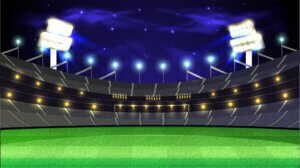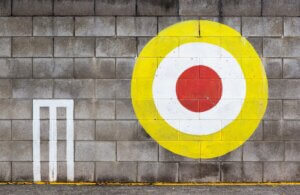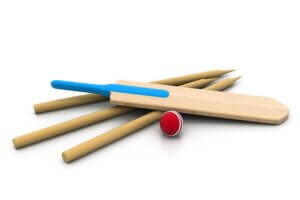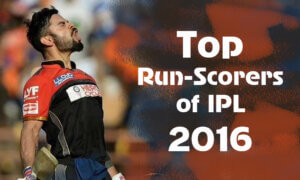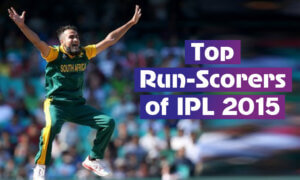Types of Shots in Cricket
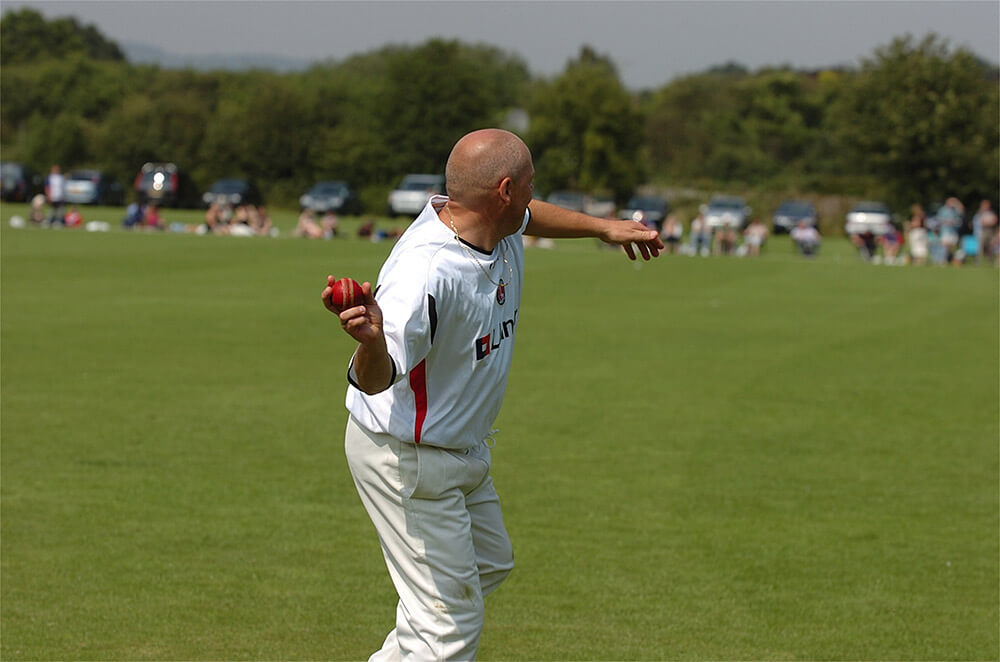
Switch Hit
ive">On Driveer_Drive">Cover Driveht_Drive">Straight Drive4R">
In this article, we are going to take a look at various types of shots that batsmen use in cricket. Some shots are played with a vertically held bat while others involve the use of a bat held horizontally. Batsmen can choose to go forward or back from their stance at the crease, depending on the type of shot they wish to play. The length of the ball delivered by the bowler usually determines whether the batsman chooses to play forward or back. A fuller-length delivery, where the ball is pitched up, would require the batsman to play forward. A shorter ball may cause the batsman to stay back to make himself room to negotiate the delivery. Playing forward to a short delivery is fraught with danger. A batsman who chooses to go on to his front foot to a bouncer, for instance, exposes himself to injury.
Contents
Shots Played into the Straight Field
Straight shots are usually played with a vertically held bat and can be either defensive or offensive. In Test cricket, for instance, openers are traditionally advised to play in the ‘V.’ In other words, they are encouraged to play with a vertical bat to negate the movement offered by a new ball. Such shots may be either defensive or offensive.
Defensive Shots
Forward Defensive
To play this shot, the batsman anchors his backfoot and takes a long stride by moving his front foot forward to the pitch of the ball to meet the ball with the bat and block it. The aim of the batsman playing a forward defensive shot is to protect his wicket or person by blocking the ball dead. As he does not intend to take a run from the ball, the batsman is unlikely to employ any strength while executing the stroke. Instead, he is likely to play with “soft hands,” a colloquial expression used by cricket commentators to indicate that the grip on the bat is “soft,” implying that the batsman holds the bat with a light grip.
Backward Defensive
The batsman executes a backward defensive shot when he chooses to block the ball on the back foot. While a defensive block is not intended to fetch runs, the batsman may convert the block into a push by using the stroke to direct the ball into a vacant area in order to steal a run.
Leave
If the batsman chooses not to play a shot at all, such decision results in a ‘leave.’ As long as it is a deliberate ploy by the batsman, a leave is considered a type of shot. This is not to be confused with a failure to connect the bat with the ball in a failed attempt to hit a delivery for runs. A leave or a block is more often used by a batsman in a Test match, in which the scoring rate doesn’t matter and there is no urgency for runs, than in limited-overs cricket. The leave is a strategic shot that a batsman uses while he gauges the nature of the wicket and the quality of bowling before deciding to play shots for runs. Leaving a ball involves elements of technique combined with judgement. The batsman must keep his eye on the ball to ensure that the ball he chooses to leave is not likely to hit either his person or the stumps. The player must also guard against inadvertent contact of the bat with the ball that could cause his dismissal by a catch.
OfOffensive Shots
em>Straight Drive
The batsman drives the ball by hitting it with a vertical bat swung through the line of the ball in a vertical arc. The batsman makes contact with the ball in front of him to drive it along the ground. A straight drive takes place when the ball travels in a straight line past the bowler towards the sight screen. Though a drive is, by definition, a shot played along the ground, the batsman may choose to play a lofted drive over the heads of close-in fielders in order to score runs. Depending on how hard it is struck, this lofted shot may even fetch the batsman six runs.
ShShots Played to the Off Side
over Drive
This is a type of drive that is directed towards the fielding position of ‘cover’.
Off DrOff Drive
s a type of drive that is intended to direct the ball to mid-off.
SquareSquare Drive
s a type of drive that causes the ball to move in the direction of point. A square drive involves similar arm orientation as does a square cut. Like a cut shot, a square drive is played with a horizontally held bat. In order to play a cut shot, the batsman stands tall and executes the stroke against a rising ball, waist-high or even higher. On the contrary, in order to play a square drive, the batsman would need to bend his knees or crouch low against a ball that rises no higher than his shin and allows him enough width outside the off stump.
CutCut
s a shot played with a horizontally held bat against a short-pitched delivery. The batsman playing a cut usually intends to play it wide, for runs. He may play it late as the ball passes him or when it is alongside, not making any effort to impart power. Instead, the batsman uses the pace of the bowler to divert the ball with an angular bat. The batsman usually plays a cut shot off the back foot. However, when the slow pace of the ball allows him to do so, the batsman may choose to play the shot off his front foot. The batsman who plays a cut shot usually rolls the face of the bat over the ball to keep it down. If, instead, the batsman opens the face of the bat to play a cut shot, he runs the risk of offering a catch.
SqSquare Cut
re cut results when the batsman hits the ball hit at a tangent to the wicket in the direction of point.
LaLate Cut
tsman may choose to play a late cut as the ball passes his body or even after it passes him, directing the ball to third man.
UpUpper Cut
tsman may choose to play an upper cut when the bowler delivers the ball with extra bounce, offering width on the off side. This is a modern-day cricket shot that can cost the batsman his wicket if it’s not properly done.
StSteer
strong>delivery pitched on or outside the off stump, the batsman may choose to angle the bat at the point of contact, deflecting the ball away from the stumps while using the pace of the ball. This often-used technique to garner runs on the off-side is described as a steer.
ReReverse Sweep
rse sweep is an innovative shot that involves sweeping the ball to the off side towards third man or backward point. To make it easier to reverse sweep the ball, the batsman may reverse the positions of hands on the bat handle. This is a high-risk shot that can result in a top-edged catch or make the batsman prone to become LBW. When executed well, the shot can fetch easy runs as the fielding captain will find it hard to set a field to it. While the awkward positioning of hands and legs can preclude the use of power in the shot, on occasion, batsmen have reverse swept balls for sixes.
Former South African batsman AB de Villiers is one of the best players of the reverse sweep. De Villiers is famous for his innovative shots that often border on the crazy. De Villiers can play the shot against any bowler, slow or fast. With brilliant reflexes and hand-eye coordination, he prevents any bowler from trying to second-guess him. Once, when he was about to reverse New Zealand pacer Trent Boult, the bowler pulled the length back, trying to scuttle De Villiers’ ploy. However, the South African batting genius, known as Mr 360 degrees, made a split-second adjustment to send the ball to the fence.
Shots Shots Played to the Leg Side
ive
Square Drive
s a type of drive that causes the ball to move in the direction of point. A square drive involves similar arm orientation as does a square cut. Like a cut shot, a square drive is played with a horizontally held bat. In order to play a cut shot, the batsman stands tall and executes the stroke against a rising ball, waist-high or even higher. On the contrary, in order to play a square drive, the batsman would need to bend his knees or crouch low against a ball that rises no higher than his shin and allows him enough width outside the off stump.CutCut
s a shot played with a horizontally held bat against a short-pitched delivery. The batsman playing a cut usually intends to play it wide, for runs. He may play it late as the ball passes him or when it is alongside, not making any effort to impart power. Instead, the batsman uses the pace of the bowler to divert the ball with an angular bat. The batsman usually plays a cut shot off the back foot. However, when the slow pace of the ball allows him to do so, the batsman may choose to play the shot off his front foot. The batsman who plays a cut shot usually rolls the face of the bat over the ball to keep it down. If, instead, the batsman opens the face of the bat to play a cut shot, he runs the risk of offering a catch.SqSquare Cut
re cut results when the batsman hits the ball hit at a tangent to the wicket in the direction of point.
LaLate Cut
tsman may choose to play a late cut as the ball passes his body or even after it passes him, directing the ball to third man.
UpUpper Cut
tsman may choose to play an upper cut when the bowler delivers the ball with extra bounce, offering width on the off side. This is a modern-day cricket shot that can cost the batsman his wicket if it’s not properly done.
StSteer
strong>delivery pitched on or outside the off stump, the batsman may choose to angle the bat at the point of contact, deflecting the ball away from the stumps while using the pace of the ball. This often-used technique to garner runs on the off-side is described as a steer.
ReReverse Sweep
rse sweep is an innovative shot that involves sweeping the ball to the off side towards third man or backward point. To make it easier to reverse sweep the ball, the batsman may reverse the positions of hands on the bat handle. This is a high-risk shot that can result in a top-edged catch or make the batsman prone to become LBW. When executed well, the shot can fetch easy runs as the fielding captain will find it hard to set a field to it. While the awkward positioning of hands and legs can preclude the use of power in the shot, on occasion, batsmen have reverse swept balls for sixes.
Former South African batsman AB de Villiers is one of the best players of the reverse sweep. De Villiers is famous for his innovative shots that often border on the crazy. De Villiers can play the shot against any bowler, slow or fast. With brilliant reflexes and hand-eye coordination, he prevents any bowler from trying to second-guess him. Once, when he was about to reverse New Zealand pacer Trent Boult, the bowler pulled the length back, trying to scuttle De Villiers’ ploy. However, the South African batting genius, known as Mr 360 degrees, made a split-second adjustment to send the ball to the fence.
Shots Shots Played to the Leg Side
ive
Late Cut
tsman may choose to play a late cut as the ball passes his body or even after it passes him, directing the ball to third man.UpUpper Cut
tsman may choose to play an upper cut when the bowler delivers the ball with extra bounce, offering width on the off side. This is a modern-day cricket shot that can cost the batsman his wicket if it’s not properly done.
StSteer
strong>delivery pitched on or outside the off stump, the batsman may choose to angle the bat at the point of contact, deflecting the ball away from the stumps while using the pace of the ball. This often-used technique to garner runs on the off-side is described as a steer.
ReReverse Sweep
rse sweep is an innovative shot that involves sweeping the ball to the off side towards third man or backward point. To make it easier to reverse sweep the ball, the batsman may reverse the positions of hands on the bat handle. This is a high-risk shot that can result in a top-edged catch or make the batsman prone to become LBW. When executed well, the shot can fetch easy runs as the fielding captain will find it hard to set a field to it. While the awkward positioning of hands and legs can preclude the use of power in the shot, on occasion, batsmen have reverse swept balls for sixes.
Former South African batsman AB de Villiers is one of the best players of the reverse sweep. De Villiers is famous for his innovative shots that often border on the crazy. De Villiers can play the shot against any bowler, slow or fast. With brilliant reflexes and hand-eye coordination, he prevents any bowler from trying to second-guess him. Once, when he was about to reverse New Zealand pacer Trent Boult, the bowler pulled the length back, trying to scuttle De Villiers’ ploy. However, the South African batting genius, known as Mr 360 degrees, made a split-second adjustment to send the ball to the fence.
Shots Shots Played to the Leg Side
ive
Steer
strong>delivery pitched on or outside the off stump, the batsman may choose to angle the bat at the point of contact, deflecting the ball away from the stumps while using the pace of the ball. This often-used technique to garner runs on the off-side is described as a steer.ReReverse Sweep
rse sweep is an innovative shot that involves sweeping the ball to the off side towards third man or backward point. To make it easier to reverse sweep the ball, the batsman may reverse the positions of hands on the bat handle. This is a high-risk shot that can result in a top-edged catch or make the batsman prone to become LBW. When executed well, the shot can fetch easy runs as the fielding captain will find it hard to set a field to it. While the awkward positioning of hands and legs can preclude the use of power in the shot, on occasion, batsmen have reverse swept balls for sixes.
Former South African batsman AB de Villiers is one of the best players of the reverse sweep. De Villiers is famous for his innovative shots that often border on the crazy. De Villiers can play the shot against any bowler, slow or fast. With brilliant reflexes and hand-eye coordination, he prevents any bowler from trying to second-guess him. Once, when he was about to reverse New Zealand pacer Trent Boult, the bowler pulled the length back, trying to scuttle De Villiers’ ploy. However, the South African batting genius, known as Mr 360 degrees, made a split-second adjustment to send the ball to the fence.
Shots Shots Played to the Leg Side
ive
Shots Played to the Leg Side
iveThis is a drive shot played by the batsman to direct the ball into the region between the stumps and the mid-on fielding position.
Flick<Flick
tsman can play a flick shot with a vertically held bat against a pitched-up delivery. The shot involves the use of wrists. Commentators describing a flick often use the phrase “clipped off the leg.” The arc of the bat used to execute this shot is like that for an on drive, while the angle of the bat, on the other hand, is turned towards leg. The batsman may choose to play this stroke on either the front or back foot. He could also elect to hit the ball from his hips or off his toes.
India captain Virat Kohli is one of the finest exponents of the flick shot. With a bottom-handed grip, Kohli had a penchant for playing shots on the leg side since his teenage days. Although, he would often be trapped LBW by taller fast bowlers. His coach at the time, Mr. Sharma, is said to have become angry with Virat for trying to flick balls pitched on the middle stump without moving his left leg towards the leg stump. But with dedicated practice, the young Kohli mastered the stroke that has gone on to become his signature shot.
Leg GlLeg Glance
he batsman receives a ball oriented towards the leg side, he may choose to play a delicate flick shot with a vertically held bat as the ball passes him. He will need to work his wrist to turn the ball towards the fine leg or square leg region. Such flick shot is called a leg glance. The batsman must ensure that he moves his body and head inside the line of the delivery even as he makes a late deflection of the bat face towards the leg region. He can play the shot off his hips, shin or toes. He can choose to play off the back foot if he receives a rising delivery that bounces up to his hip or waist, or off the front foot if the bowler pitches the ball up to the batsman’s toes or shin.
PullPull
he batsman receives a ball that bounces up to around his waist, he may choose to play a pull shot. To do so, he would need to execute a cross-batted swing of his bat in front of his body, resulting in the ball travelling towards square leg or mid-wicket.
Former Australian captain Ricky Ponting made the pull shot his signature stroke. Always aggressive, Ponting’s initial movement was on to the front foot which made his ability to pull more impressive. If the bowler dragged the ball down the leg side and was even marginally short, the ball would disappear to the boundary on the leg side. Ponting had mastered the shot to such a degree that he would react instantly when any fast bowler gave him the slightest opportunity to unfurl his favourite stroke. Ponting would always watch the ball intently and pick up the length early enough to be able to move quickly into position and execute the bat swing with great control while holding his head steady.
SlSlog
tsman may choose to play a pull shot with power, aiming to hoick it over the mid-wicket boundary for a six. A pull shot would qualify to be described as a slog if the batsman plays it at a ball that does not ordinarily merit a pull shot. Commentators commonly describe a slog as a hit to “cow corner,” hinting at the lack of sophistication in shot-making in a display of batsmanship better suited to a village game on a field often visited by cows. A typical slog would require the batsman to put all his body weight and power into the bat swing.
HookHook
a pull is played against a rising ball that bounces up to waist height, a similar shot played against a ball that bounces at chest-height or above it is called a hook shot. A hook shot propels the ball in the direction behind square leg in either an aerial route or along the ground. The batsman usually plays a pull or hook shot off the back foot. Occasionally, he may execute such a shot off the front foot.
Sweep<Sweep
g>When the batsman facing a slow bowler receives a ball that bounces low, he may choose to go down on one knee and bring his head down in line with the delivery to swing the bat horizontally to ‘sweep’ the ball as it arrives into the leg region in the direction of fine leg or square leg. While a sweep shot is usually executed against a delivery on the leg-side, the batsman may also choose to sweep a ball from outside the off stump to try to score runs on the leg side.
PaPaddle Sweep
he batsman extends the bat horizontally in the direction of the bowler to execute a sweep shot with a near-stationary bat, the resulting shot is a paddle sweep that deflects the ball towards fine leg. On the contrary, a regular sweep shot requires a horizontal swing of the bat.
SlSlog Sweep
rong>a pitched-up ball from a slow bowler, the batsman may choose to adopt a kneeling position typical of a sweep shot and slog the ball towards square leg, as opposed to mid-wicket which is the preferred direction for a regular sweep. In a slog sweep, the batsman places his front leg very wide outside the leg stump, allowing for a complete swing of the bat.
England batsman Moeen Ali is one of the best executors of the slog sweep. As a spinner himself, Moeen Ali is said to be confident of playing the shot with success against spin bowling. Ali is reported to have said in an interview that the slog sweep was an effective way of hitting a spinner out of the attack and ensure that he didn’t get on top of a batsman. A left-handed batsman, Moeen prefers to play it against left-arm spinners who try to pitch the ball into the rough outside a batsman’s off stump. In the process, they leave the mid-wicket fence unguarded as the focus is on keeping strokes limited to the off side of the wicket. According to Moeen, the slog sweep can also be used effectively by a left-handed batsman against a right-arm off spinner who does not get much turn from the wicket.
Other Other Innovative Shots
h Hit
The batsman may choose to adopt a batting stance that reverses his conventional handedness as the bowler runs in to bowl. The shot puts the fielding side at a distinct disadvantage as the fielders are caught out of position. In 2012, the ICC cleared the switch hit as a legal shot after some had questioned its legality. The switch hit is a high-risk shot as the batsman may not be as good when using another hand.
Though the shot had been played before, the switch hit has become synonymous with former England batsman Kevin Pietersen who played it with the greatest ease. Often taking advantage of an on-side field setting, Pietersen played the shot with power and precision. In a memorable knock of 142 against Sri Lanka in a Test in Edgbaston in 2006, Pietersen used the stroke to register a six over cover against Sri Lankan off-spinner Muralitharan. A few years later, Pietersen gave New Zealand bowler Scott Styris the same treatment. Other players who have used the shot with a fair degree of skill include Australian batsmen Glenn Maxwell and David Warner.
Scoop Scoop or Ramp Shot
he batsman receives a straight short-pitched delivery, he may choose to go on the front foot and get under the bounce of the ball to scoop it over the head of the wicket-keeper for cheap runs behind the stumps. The high-risk shot is increasingly being played in limited-overs cricket because of the possibility of getting runs in an area not often manned by a fielder. In order to execute the shot effectively, the batsman may choose to go down on one knee to a ball pitched by a fast bowler on a good length or slightly short of a good length before scooping it over the keeper.
Former Sri Lankan batsman Tillakaratne Dilshan was an early innovator of the ramp shot that soon came to be known as the ‘Dilscoop.’ In an interview, Dilshan once explained how he had invented the shot while playing tennis ball cricket on streets where space constraints did not allow room for shots square of the wicket. Former Zimbabwe batsman Douglas Marillier played his own version of the shot with much success against the likes of Australian bowler Glenn McGrath and Indian paceman Zaheer Khan. While the Dilscoop involved hitting the ball over the wicket-keeper’s head, the Marillier version of the ramp shot sought to send the ball to the boundary past fine leg.
HelicopHelicopter Shot
sman who receives a yorker or a pitched-up delivery may choose to play a wristy flick by using the bottom hand as the dominant hand in order to score boundaries against balls that are otherwise hard to score against. The shot receives its name because of the flourish of the bat above the batsman’s head in the follow-through.
While Indian batsmen Mohd Azharuddin and Sachin Tendulkar are known to have played the helicopter shot in international matches much earlier, it was MS Dhoni who made it his signature stroke. Dhoni’s original inspiration for the shot was revealed in the biopic titled “MS Dhoni: The Untold Story,” in which Dhoni’s childhood friend Santosh Lal was shown playing the shot to impress his girlfriend. Lal and Dhoni played a lot of tennis ball cricket together and Dhoni who learned the shot from Lal refined the shot that gave him many valuable runs over the course of his international career.
Sweep
g>When the batsman facing a slow bowler receives a ball that bounces low, he may choose to go down on one knee and bring his head down in line with the delivery to swing the bat horizontally to ‘sweep’ the ball as it arrives into the leg region in the direction of fine leg or square leg. While a sweep shot is usually executed against a delivery on the leg-side, the batsman may also choose to sweep a ball from outside the off stump to try to score runs on the leg side.PaPaddle Sweep
he batsman extends the bat horizontally in the direction of the bowler to execute a sweep shot with a near-stationary bat, the resulting shot is a paddle sweep that deflects the ball towards fine leg. On the contrary, a regular sweep shot requires a horizontal swing of the bat.
SlSlog Sweep
rong>a pitched-up ball from a slow bowler, the batsman may choose to adopt a kneeling position typical of a sweep shot and slog the ball towards square leg, as opposed to mid-wicket which is the preferred direction for a regular sweep. In a slog sweep, the batsman places his front leg very wide outside the leg stump, allowing for a complete swing of the bat.
England batsman Moeen Ali is one of the best executors of the slog sweep. As a spinner himself, Moeen Ali is said to be confident of playing the shot with success against spin bowling. Ali is reported to have said in an interview that the slog sweep was an effective way of hitting a spinner out of the attack and ensure that he didn’t get on top of a batsman. A left-handed batsman, Moeen prefers to play it against left-arm spinners who try to pitch the ball into the rough outside a batsman’s off stump. In the process, they leave the mid-wicket fence unguarded as the focus is on keeping strokes limited to the off side of the wicket. According to Moeen, the slog sweep can also be used effectively by a left-handed batsman against a right-arm off spinner who does not get much turn from the wicket.
Other Other Innovative Shots
h Hit
Slog Sweep
rong>a pitched-up ball from a slow bowler, the batsman may choose to adopt a kneeling position typical of a sweep shot and slog the ball towards square leg, as opposed to mid-wicket which is the preferred direction for a regular sweep. In a slog sweep, the batsman places his front leg very wide outside the leg stump, allowing for a complete swing of the bat.England batsman Moeen Ali is one of the best executors of the slog sweep. As a spinner himself, Moeen Ali is said to be confident of playing the shot with success against spin bowling. Ali is reported to have said in an interview that the slog sweep was an effective way of hitting a spinner out of the attack and ensure that he didn’t get on top of a batsman. A left-handed batsman, Moeen prefers to play it against left-arm spinners who try to pitch the ball into the rough outside a batsman’s off stump. In the process, they leave the mid-wicket fence unguarded as the focus is on keeping strokes limited to the off side of the wicket. According to Moeen, the slog sweep can also be used effectively by a left-handed batsman against a right-arm off spinner who does not get much turn from the wicket.
